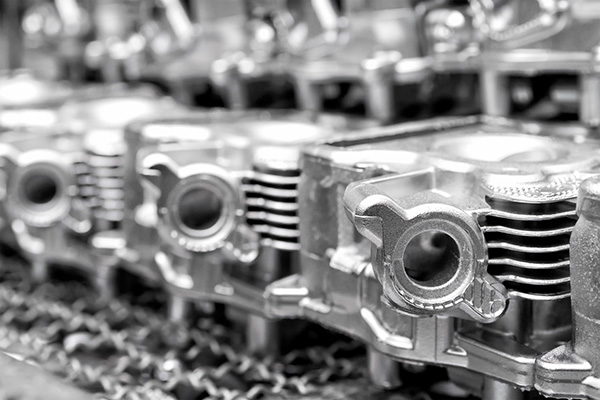Metals are hard materials, and unless they are heated, it is very difficult to curve an item out of this material. If you are still wondering how metal parts are made, the answer is through die casting. It can facilitate manufacturing metal parts in huge quantities without much problem.
In the die casting process, the metal parts are made by forcing a molten metal to take the shape of the mold cavity under enormously high pressure. The mold cavity used in the die casting process, as expected, is made from really hard steel. It is machined in the shape of the final parts of the die-casts. There are many parts and products made from die-casting, including nameplates, textured surfaces, metal parts, and many others.
This article will take a closer look at the different types of die casting process and their common uses.
Types of Die Casting Process
Generally, there are two main types of die casting process: hot chamber and cold chamber. Both die casting processes are designed with one thing in mind: to create a metal part by casting mold through molten metal injection. Depending on the type of molten metal, its size, and geometry, these die casting types can deliver excellent results over other manufacturing methods.

Aluminum die casting parts*
Hot Casting or Hot-Chamber Casting Process
This die casting process is known by other names like hot casting or gooseneck casting. Between the two types of the casting method, this one is more popular. In hot-chamber die casting, the cylinder chamber of the injection system is fully submerged in the liquefied metal bath. It has a gooseneck metal feeding system that pulls the molten material into the mold cavity. This process can produce more parts than the cold-chamber process, which explains its popularity among manufacturers.
While this setup allows for a fast and easy mold injection process, it also has its drawback, namely, it increases the susceptibility of the finished part to corrosion. For this reason, the metals used in hot casting have high fluidity and low melting points. Examples of these are zinc, copper lead, and magnesium.
Cold-Chamber Die Casting Process
The cold-chamber die casting process functions similarly to hot-chamber die casting. It’s only difference is in the fact that it concentrates more on minimizing machine corrosion rather than the efficiency of production. To achieve this, the molten metal is automatically ladled into the injection system and eliminates the necessity to immerse the injection system in the liquified metal bath.
The cold-chamber process is used for applications that are too corrosive for hot-chamber casting. Among these applications include casting of metals with high melting temperatures like aluminum alloys and aluminum.
Variations of the Two Types of Vacuum Casting
- Low pressure die casting – which is best suited for aluminum components that are asymmetrical around the axis of rotation.
- Vacuum die casting – it delivers minimal porosity and enhanced strength and is used as an initial casting process for products that require post-casting heat treatment.
- Squeeze die casting – it is a solution that best applies for casting alloys and metals that has low fluidity.
- Semi-Solid die casting – it delivers maximum density and maximum density.
Conclusion
There you have it, the types of die casting processes, its applications, and how it can fulfill your requirements for large quantities of metal parts. Die casting is an effective manufacturing process used to produce parts with accurate dimensions and clear definition in high volume.
Reference
*Image from https://www.rfqline.com/
